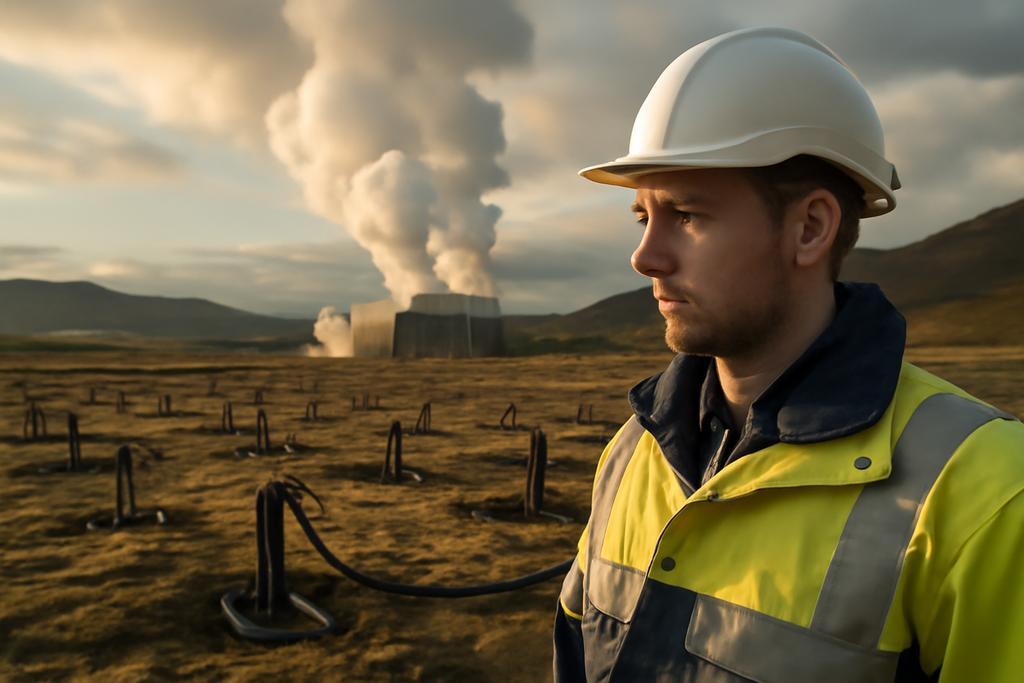The Speed of Heat
Imagine designing a massive geothermal system, a network of underground pipes snaking hundreds of meters into the earth. To ensure it works efficiently and sustainably, you need incredibly precise computer simulations, predicting heat flow for decades. But these simulations are notoriously slow, a computational bottleneck that has long hampered progress. A new method, developed by researchers at KTH Royal Institute of Technology, promises a radical speed-up, potentially revolutionizing geothermal energy design.
The Problem: Heat’s Fickle Nature
The challenge lies in the sheer complexity of heat transfer in these systems. Heat from boreholes spreads slowly through the ground, but the interactions between numerous boreholes create a tangled web of temporal and spatial scales – from centimeters to kilometers, and minutes to decades. Traditional methods have tried to tackle this by superposing — summing up — heat effects from each borehole over time. But this simple approach is computationally costly, growing quadratically with the number of timesteps, leading to unmanageable computation time for long, high-resolution simulations.
The Breakthrough: Causality’s Unexpected Help
Marc Basquens and Alberto Lazzarotto’s innovation is based on a clever insight: the principle of causality. While the fundamental equations of heat transfer might suggest heat spreads instantaneously, this isn’t how we experience the world. Heat takes time to travel. The researchers exploit this ‘causal’ aspect of heat flow, using error tolerance to determine a sensible ‘influence region’ for each borehole. Boreholes far outside the region are considered to have a negligible effect on a specific target location.
This sounds simple, but it has a profound impact on computation. By focusing only on relevant interactions, the researchers dramatically reduce the number of calculations needed. It’s akin to optimizing a search engine: instead of scanning the entire web, it zeros in on the most relevant results, improving speed and efficiency.
The Method: Blocks and Integration
The new method, dubbed the ‘blocks method,’ partitions the heat flow calculations into time-based blocks. Each block corresponds to a specific time window and only includes calculations from sources that could causally affect the target during that period. These blocks are cleverly chosen based on the desired error tolerance and geometric relationships between boreholes. This approach greatly simplifies the numerical integration needed, allowing for more efficient algorithms.
The researchers cleverly combine adaptive Gaussian quadrature, a versatile numerical integration method, with an asymptotic expansion — a mathematical technique for approximating functions using a series. This hybrid strategy works particularly well for handling the oscillatory nature of the heat propagation integrals, achieving both accuracy and speed.
Results: Orders of Magnitude Faster
The results are striking. The researchers show that their ‘blocks’ method achieves a dramatic speed improvement in precomputation — work done before the main simulation. The improvements amount to orders of magnitude, depending on the specific problem and error tolerance. In the most demanding case (line-to-line interactions), which is the most important one for realistic models of geothermal fields, the precomputation phase is up to four orders of magnitude faster than previous methods.
While the simulation time itself is slightly increased due to managing the blocks at each timestep, the overall gains from the much faster precomputation still make the new method significantly faster than both the old non-history based method and convolution using FFT for the vast majority of practical use cases.
Implications: A Geothermal Revolution?
This innovation could be a game-changer for geothermal energy. It empowers engineers to model larger, more complex geothermal systems with unprecedented detail and speed. This opens the door to more accurate designs, better optimization, improved sustainability assessments, and ultimately, more widespread adoption of this clean energy source.
The implications stretch beyond geothermal energy too. The core principle of harnessing causality to accelerate complex simulations could be applicable to other fields involving wave propagation, such as acoustics, seismology, and even astrophysics.
This work by Basquens and Lazzarotto at KTH Royal Institute of Technology shows that even seemingly simple ideas, such as the notion of causality, can dramatically improve computational efficiency when applied cleverly to complex problems. It’s a testament to the power of insightful thinking and computational innovation in accelerating scientific progress.










